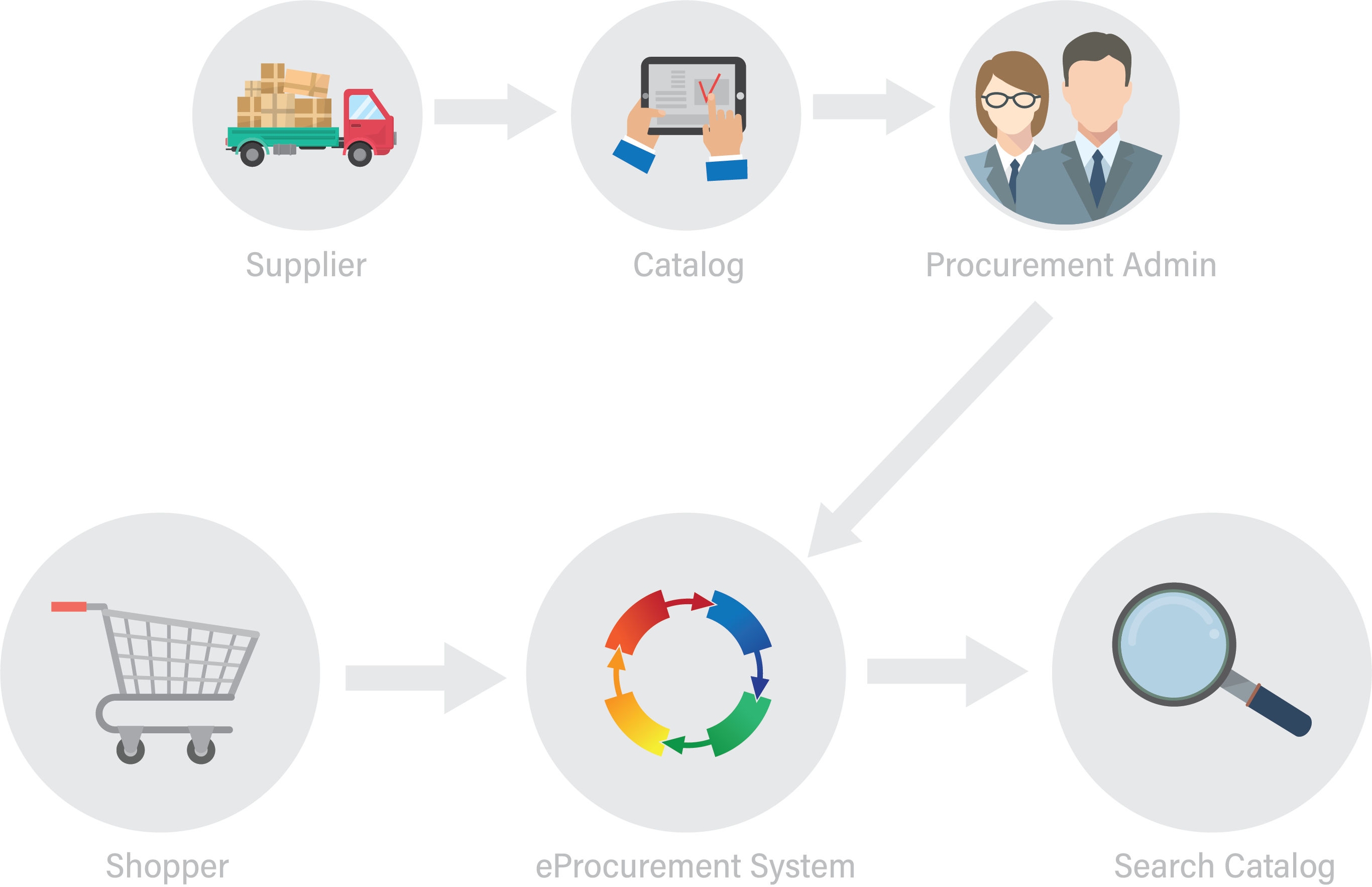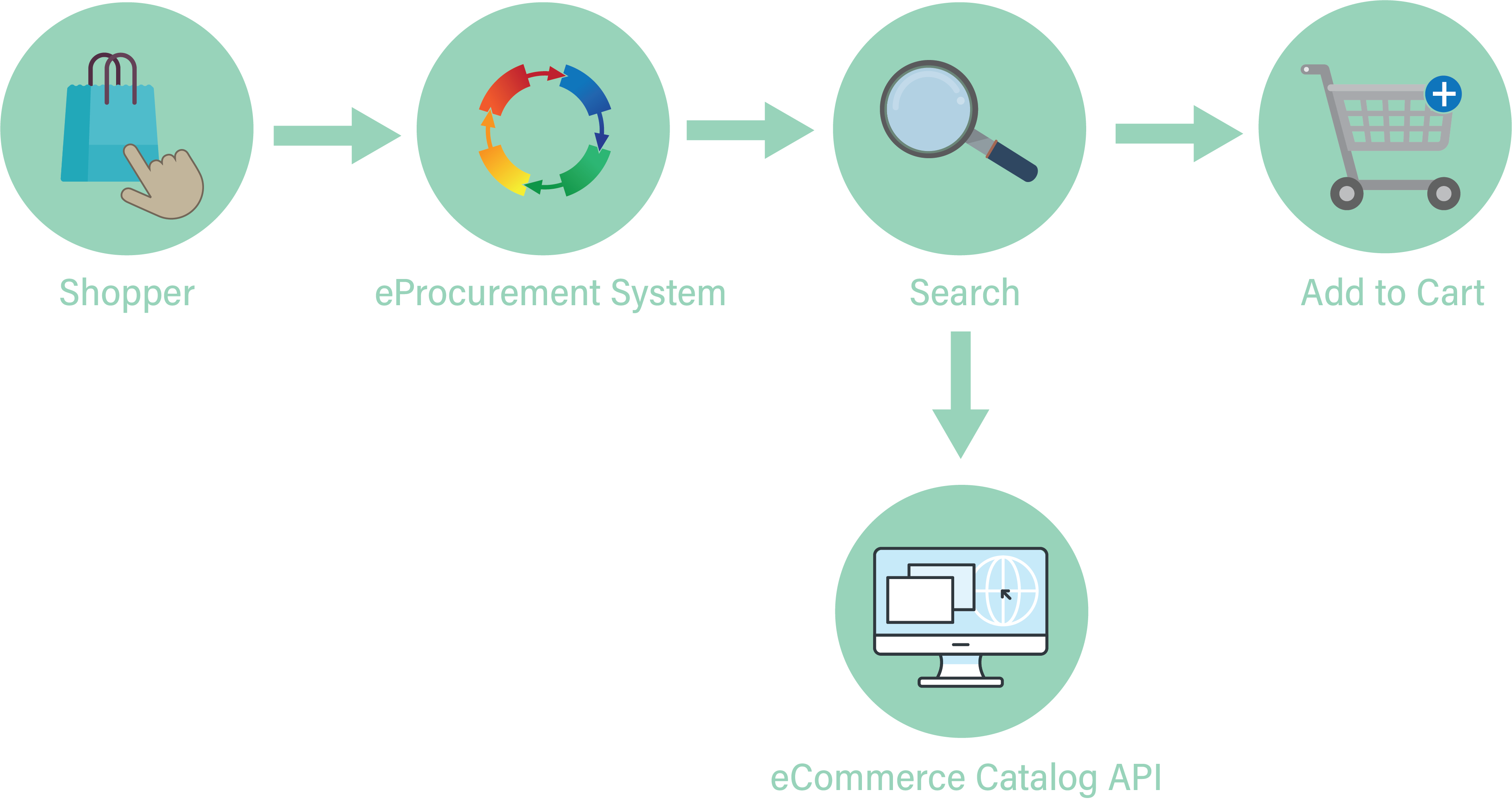B2B Commerce Shopping Models
B2B purchases are made in a number of ways today. There are a few requirements that differentiate B2B commerce from B2C commerce:
-
Buyers have contracts with suppliers - these may include negotiated prices and product restrictions
-
Buyers’ orders often need to be be approved internally prior to being placed with the supplier
-
Orders need to be recorded in the buyers financial system
Brick and Mortar
Before eCommerce, there were physical stores, now referred to as brick and mortar stores. Shopping at a physical store allows shoppers to interact with products prior to purchasing. Shoppers can receive purchased goods immediately in most cases.

Pros:
-
Goods are received immediately
Cons:
-
Approvals take place offline
-
Orders need to be manually entered into the financial system
When to Use: When goods are needed immediately
eCommerce Website
B2B shoppers can make purchases directly on their suppliers existing B2C sites. If there is a contract in a place with supplier, any negotiated discounts typically won’t be applied to these purchases. These purchases are often referred to as “maverick spend”, something procurement departments actively try to reduce.

Pros:
-
Least expensive option for suppliers
Cons:
-
No contract pricing
-
Approvals take place offline
-
Orders need to be manually entered into the buyer’s financial system
When to Use: When the buyer does not have a contract with the supplier
eCommerce Website w/Accounts
B2B eCommerce websites often support associating users with accounts (buying organizations) and customizing the catalog for a single account. This allows shoppers to login to an eCommerce website to see a view of the catalog that has been customized for their buying organizations negotiated contract. Employees can be pre-loaded into the suppliers eCommerce system or an email domain name validation can be used to verify the shopper belongs to the buying organization.

Pros:
-
Contract pricing and product restrictions can be applied to the catalog
Cons:
-
Every shopper has a seperate login for every supplier’s website
-
Different user experience at each supplier’s website
-
Usually no support for approvals
-
Need to disable account when employees leave - supplier may not be aware
When to Use: When the buyer makes infrequent purchases or does not have an eProcurement system
eProcurement Hosted Catalog
Organizations that use eProcurement systems may be able to load a suppliers product catalog into their eProcurement system. This allows employees of the organization to shop from the supplier’s catalog from within their eProcurement system.

Pros:
-
Buyers have one user experience for shopping from multiple suppliers
-
Orders can be approved internally before being sent to the supplier
-
Contract pricing can be included in the catalog
Cons:
-
Supplier has to maintain a catalog file for every buyer
-
Each buyer may have a different preferred catalog file format
-
-
Buyer has to import catalog files for every supplier
When to Use: Buying organizations volume justifies catalog maintenance costs and catalog/pricing does not change frequently
eProcurement PunchOut
PunchOut is a technology that allows employees to access their suppliers eCommerce sites from within their organizations eProcurement system. Upon checking out of a PunchOut-enabled eCommerce site, the users shopping cart transferred to the eProcurement system where it can be turned into a requisition and submitted for approval.

Pros:
-
Supplier can leverage existing eCommerce site
-
Pricing can be updated by the supplier
Cons:
-
Different search experience for every supplier
-
Can’t search across suppliers simultaneously
eProcurement Search API
Advanced eProcurement systems support catalog API integrations directly with suppliers. These integrations provide the shoppers with a similar experience to hosted catalogs but with the benefit of real-time pricing and product availability. Suppliers need to have an API for search all products in their catalog by keyword and an API to retrieve customer-specific pricing.

Pros:
-
Pricing can be dynamically updated by the supplier
-
Uniform interface for searching
-
Shopper can search across suppliers simultaneously
Cons:
-
Lack of support for configurable/personalized products
When to Use: Buying organization is using a modern eProcurement system